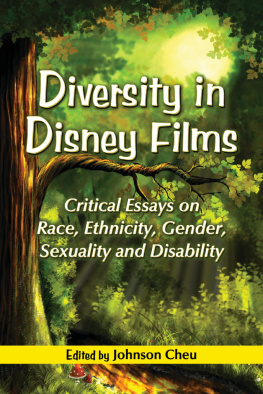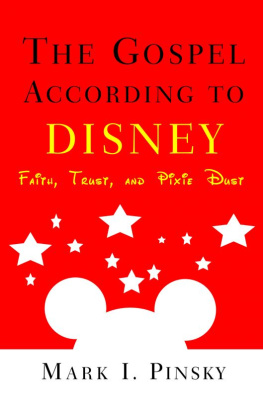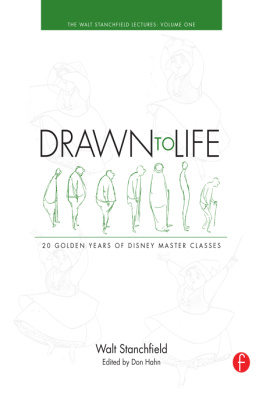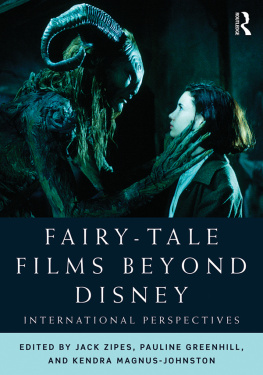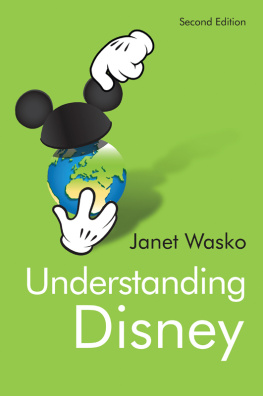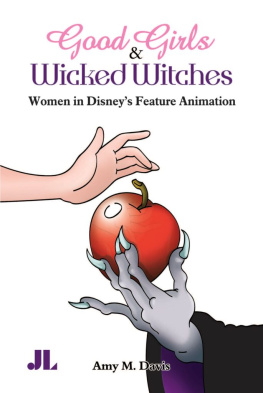
Diversity in Disney Films
Critical Essays on Race, Ethnicity, Gender, Sexuality and Disability
EDITED BY JOHNSON CHEU

McFarland & Company, Inc., Publishers
Jefferson, North Carolina
For May and Anne
and everyone who was young once
Acknowledgments
I am grateful to all of my contributors who took this journey with me and who believed in the importance of the work. My colleagues at Michigan State, present and former, for their support and encouragement; in particular John Bratzel, who said, If you cant find the book you need, then you need to make one. Also Cheryl Caesar and Deborah Carmichael who lent their ears without fail, along with Jeff Charnley, Kitty Geissler, Gary Hoppenstand, Douglas Noverr, Richard Manderfield and Benjamin Urish. A very special thanks to John A. Dowell, Michigan States Technology Literacy Specialist, for his friendship and his invaluable expertise and contributions in manuscript preparation. Christine Levecq of Kettering University gave of her time and wisdom. My thanks to Randall W. Scott, indexer extraordinaire, Michael Rodriguez, and all the librarians at Michigan State. Further thanks to Diana Shank and Marsha Edington for their administrative support. My thanks to all my students at Michigan State, particularly those who took my Disney course.
This project had its beginnings back when I was a graduate student doing work on disability and Disneys The Hunchback of Notre Dame. My thanks to the good people there who worked with me on my early musings: Brenda Brueggemann, Kay Halasek, Valerie Lee (for the Doll Theory articles), Linda Mizjewski, Debra Moddelmog, Jim Phelan, and Thomas Piontek.
Good friends and family gave of their time and support. The Barbosa-Topetes, and the Collins-Sullivan clan for the trip to the Disney Family Museum in San Francisco and friendship beyond measure. For their love, advice, and support: John McCombe, Edna Poore, and Carolyn Tyjewski. Thanks to my family: my parents, my sister and brother-in-law, and my nieces, May and Anne, who were so good when uncle needed to watch something by Disney yet again, but who also knew enough to distract him when he didnt.
Introduction: Re-casting and Diversifying Disney in the Age of Globalization
JOHNSON CHEU
In 2011, Disney unveiled Annie Liebowitz photos from their Disney Dreams campaign featuring celebrities in classic Disney film poses such as Roger Federer as King Arthur from The Sword in the Stone (1963), Scarlett Johansson as Cinderella (1950) running away from the ball, Penelope Cruz and Jeff Bridges as Belle and the Beast, Mark Anthony and Jennifer Lopez as Jasmine and Aladdin, Whoopi Goldberg as the Genie from Aladdin (1992), and Queen Latifah as Ursula from The Little Mermaid (1989). The inclusion of international as well as ethnic celebrities perhaps signifies very little in our multicultural and global world at present. Yet, its hard to believe that Disney, one of the largest media conglomerates in the world, was not aware of such shrewd marketing, for the re-casting of Disney characters largely identified as Caucasian (Aladdin [1992] notwithstanding) with mostly celebrities of color can clearly be seen as a nod toward a more inclusive pluralistic society.
Whether or not Disney intended from the start a more muticultural outlook and representation in its films and ads is debatable (and depends perhaps on how well the Dreams campaign is ultimately received), but there can be no doubt that with such characters and films as the Asian American boy Russell in Up (2009)a film that also contains an explicit reference to divorcePrincess Tiana, the first African American princess introduced in The Princess and the Frog (2009), Pocahontas (1995), Mulan (1998), and Aladdin, Disney is, in fact, becoming more multicultural in its filmic fare and its image. The latest Toy Story installment, Toy Story 3 (2010), contains Spanishmode Buzz Lightyear, a futuristic Latin-Lover-type-Tim Allen/Antonio Banderas hybrid, meant to assuage Woodys fears of leaving Annie, as Annie gushes to Woody, Its all right Woody, now that I know about Buzzs Spanish switch. Toy Story 3 also has what one might call ambiguously gay Ken or, at least, metro-sexual Ken, a Ken more into clothes than Barbie (the scene where shes about to tear apart his Nehru jacket), and who signs his letters with hearts and flowers. In the age where so-called childrens movies have become more infused with humor aimed at adultsMike Meyers Cat in the Hat (2003) holding a rake and breaking the fourth wall proclaiming dirty hoe or a panning of Fionas room in Shrek 2 (2004) showing a drawing of Sir Justin on the wall, alluding to the then-real-life Justin Timberlake/Cameron Diaz romancesuch wink-wink humor aimed at adults in Toy Story 3 seems like a bit of harmless fun to keep the adults entertained while they sit through yet another viewing of Toy Story 3. Yet these representations of minority groups, of diversity, are anything but mindless fun in our digital-download-video-streaming age where these images can be viewed repeatedly. The critic Jack Zipes, in Breaking the Disney Spell, states that Disney has replaced the original fairy tales in our popular and collective imaginations; Disney has become the cultural touchstone (an apropos reference to its Touchstone film division) for generations. Zipes writes, If children or adults think of the great, classic fairy tales today ... they will think of Walt Disney. Their first and perhaps lasting impression of these tales and others will have emanated from a Disney film, book, or artifact. With the premiere of two new television seriesGrimm and Once Upon a Timeon United States television networks in the fall of 2011 as well as two large-screen adaptations of Snow White premiering in 2012, popular interest in fairy tales, the cornerstone upon which Walt Disney built his empire beginning with Snow White and the Seven Dwarves, has grown and so has consumption of Disney and Disneyesque media.
I was surprised to see how little critical attention has been paid to the preeminent thing that Disney made: his films. Doing research for a class I was putting together in 2008, I found that the vast majority of our universitys holdings on Disney concerned his business practices or the global impact of his empire. Relative to the fifty or so books on business and commercialism and childhood psychology, little attention had been paid to his films, and books that did, such as Ward and Christians Mouse Morality, were out of print. To be sure, some books such as Janet Waskos Understanding Disney contained film criticism and certainly specialized books such as Amy Daviss Good Girls and Wicked Witches and Sean Griffins Tinkerbells and Evil Queens existed, as well as the Bell et al. collection From Mouse to Mermaid, but still, it seemed as though Disney the Man/Mogul or Disney the global conglomerate loomed large in scholarship while scholarship on his artistic output remained relatively scant.
Within the film scholarship that was in print, the amount that concerned representations of diversity were largely located in specialized books such as the ones mentioned above or in specialized journal issues. There could be a myriad of reasons for this, none the least of which is academias current push toward STEM research and, within film and animation studies, toward production. Whatever the reason or reasons for the trends in film and animation studies that seem to be occurring, the reality is that within academia and outside of it, there remains a growing emphasis on globalization. Yet, the fact that that emphasis requires
Next page
